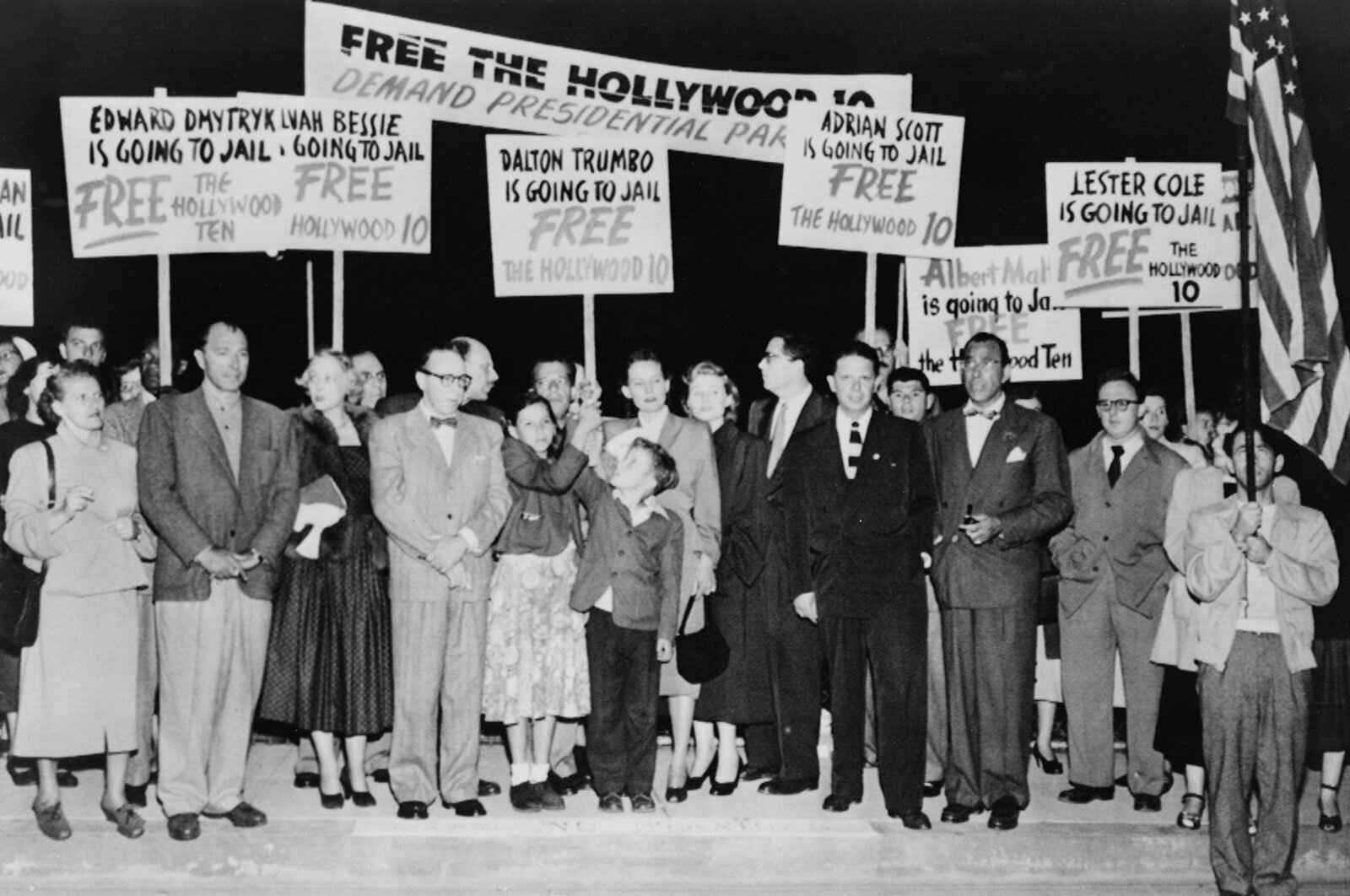Show notes:
Here is a list of published sources that the entire season draws from:
The Red and the Blacklist: An Intimate Memoir of a Hollywood Expatriate by Norma Barzman
Dalton Trumbo: Blacklisted Hollywood Radical by Larry Ceplair and Christopher Trumbo
Trumbo: A biography of the Oscar-winning screenwriter who broke the Hollywood blacklist by Bruce Cook
When Hollywood Was Right: How Movie Stars, Studio Moguls, and Big Business Remade American Politics by Donald T. Critchlow
Odd Man Out: A Memoir of the Hollywood Ten by Edward Dmytryk
City of Nets by Otto Friedrich
Hollywood Radical, Or How I Learned to Love the Blacklist by Bernard Gordon
I Said Yes to Everything by Lee Grant
Army of Phantoms: American Movies and the Making of the Cold War by J. Hoberman
Naming Names by Victor S. Navasky
West of Eden: An American Place by Jean Stein
The Inquisition in Hollywood: Politics in the Film Community, 1930-60 by Larry Ceplair
Sources specific to this episode:
Much of the research for this episode stemmed from the book I’m working on about Howard Hughes in Hollywood. I’ve taken two trips to the University of Nevada at Las Vegas, which holds nearly 100 boxes of Hughes materials from the office of Dick Hannah, who supervised Hughes’ publicity for the second half of his life. Hughes instructed his press agents to clip every article about him that they could find, as well as published pieces relating to his obsessions, from organized crime and gaming to certain actresses with whom he was once or currently sexually involved, to people he sued or was sued by. Thus, the files include much material on Jarrico, HUAC and Hughes' management of RKO.
Key sources referenced in this episode found at UNLV include:
--Transcript of Hughes’ 1952 American Legion address
--Jimmie Fidler’s November 8, 1951 column “Views From Hollywood,” published in the Valley News
--Coverage of the Hughes/Jarrico trial in The Mirror, Variety and the Los Angeles Examiner
--”Silver City: Who Caused the Trouble?” by Elizabeth Kerby, Frontier, May 1953
--”Reds in the Desert” no byline, Newsweek March 2, 1953
Special thanks also to Hilary Swett at the Writers Guild of America West for pointing me to clippings files and documents in their collection -- a true wealth of information, much which, in the interest of running time, I wasn’t able to include or could only briefly mention in this episode.
Key sources referenced in this episode found at the WGA include:
--Reports from the American Library of Information, and many memos and documents relating to RKO’s subscriptions to their service.
--”The Hughes-Jarrico Imbroglio and the Screen Writers’ Guild” by Mary C. McCall, Jr., Frontier, May 1952
--”Jarrico vs. Hughes: A War For Credit That Could Have Ended the Screen Writers’ Guild” By Barbara L. Hall, Written By September-October 2015
Other sources:
The Marxist and the Movies by Larry Ceplair
Salt of the Earth: The Story of a Film by Herbert Biberman
Special thanks to our special guest, Noah Segan, who returned as Howard Hughes.
This episode was edited by Henry Molofsky, and produced by Karina Longworth with the assistance of Lindsey D. Schoenholtz. Our logo was designed by Teddy Blanks.











